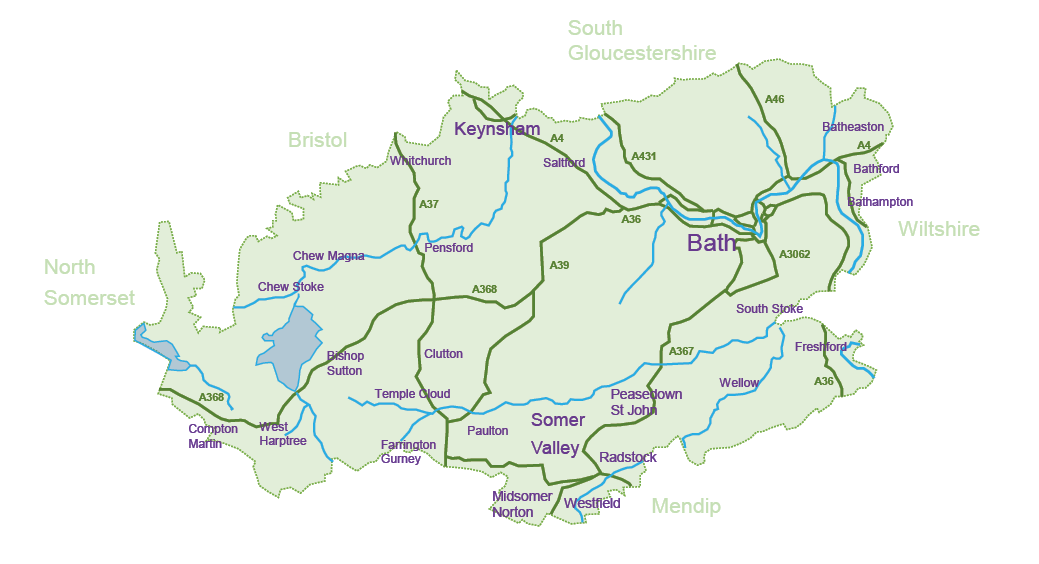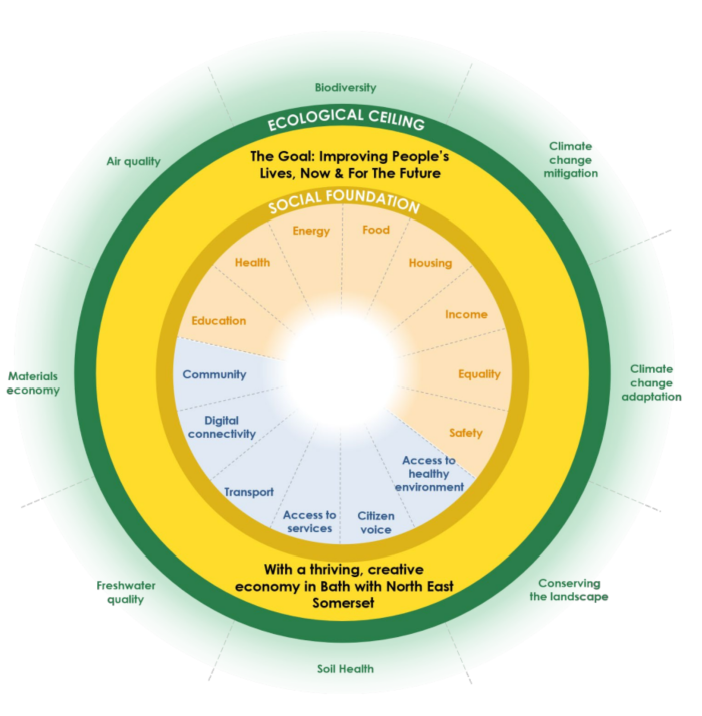The Plan area will be the whole administrative area of B&NES Council. As Local Plans must have at least a 15-year plan period from adoption, the proposed plan period is 2022 - 2042. Once adopted, the Local Plan will be reviewed every 5 years, and updated where necessary.

The primary purpose of Local Plan 2022 – 2042 is to address the local authority’s priorities for the development and use of land in the district, and set out an overall strategy for the pattern, scale and design quality of development, in order to create and sustain healthy and vibrant places and communities.
Central aims for the Local Plan
The central policy aims for our Local Plan are as follows:
- Responding to the challenge of the climate emergency and facilitating the goal of net zero carbon by 2030
- Establishing a transformational approach to protecting and enhancing nature
- Maximising the delivery of affordable housing to respond to the district’s demographic, social and economic needs
- Creating opportunities for sustainable economic development, the types of jobs that are needed in our communities, and the right type of space available for businesses to grow
We will work with our communities and stakeholders to identify the key challenges in B&NES, and the objectives and policies we need in place to address these. Our primary ambitions for the Local Plan seek to deliver our main overriding purpose: to improve people's lives. These ambitions draw from number of core strategies, which guide all of the work we do as a council:
- Corporate Strategy
- One Shared Vision
- Other key emerging council strategies (such as the Economic Strategy and Joint Health and Wellbeing Strategy)
Other issues covered by the Local Plan
We are also including these issues in the scope of the Local Plan:
- Maintaining a 5-year housing land supply and facilitating delivery of the necessary type and scale of new homes to respond to the District’s social and economic needs, including homes for older people, students, key workers, gypsies, travellers, and boat dwellers, supported accommodation for residents with health and social care needs, and provision of self-build dwellings
- Delivering high quality development that supports vibrant, healthy, successful communities, and addresses inequalities
- Ensuring new development is aligned with the necessary infrastructure, including community facilities and green infrastructure
- Protecting and enhancing the beauty of our environment
- Setting an approach to sustainable transport and movement which facilitates behavioural change and the 15-minute neighbourhood concept
- Increasing renewable energy generation
- Setting a positive strategy for the conservation and enjoyment of the historic environment
- Creating vibrant town and city centres
Preparation of the Local Plan will also allow us to incorporate and reflect national planning reforms, such as the introduction of Investment Zones.
How we assess our priorities: the Doughnut Economics model
The Local Plan will need to address a range of aims which are sometimes conflicting. We are proposing to use The Doughnut Economics model, to assess these conflicts, and establish the most appropriate and sustainable planning framework.
This model is a tool to help make economic decisions which combat climate change, but at the same time seek to meet social needs. The model helps to show how policies and proposals will affect the environment and people. If it shows that a policy will have a harmful impact on the environment or on people, there is an opportunity to modify or delete it from the Plan.
The diagram below shows an example of what a B&NES-focused Doughnut Economics model might look like.

The model has two parts:
- The inner ring focuses on the 'social foundation' of meeting people's needs, like socio-economics and homes.
- The outer ring focuses on the 'ecological ceiling', of how we take account of environmental issues, like greenhouse gas emissions and biodiversity.
Our aim is to seek to develop polices and proposals which balance benefits to both the environment and people. These policies fall within the section of the diagram between the social foundation and the ecological ceiling: the yellow 'doughnut’ between the two rings
